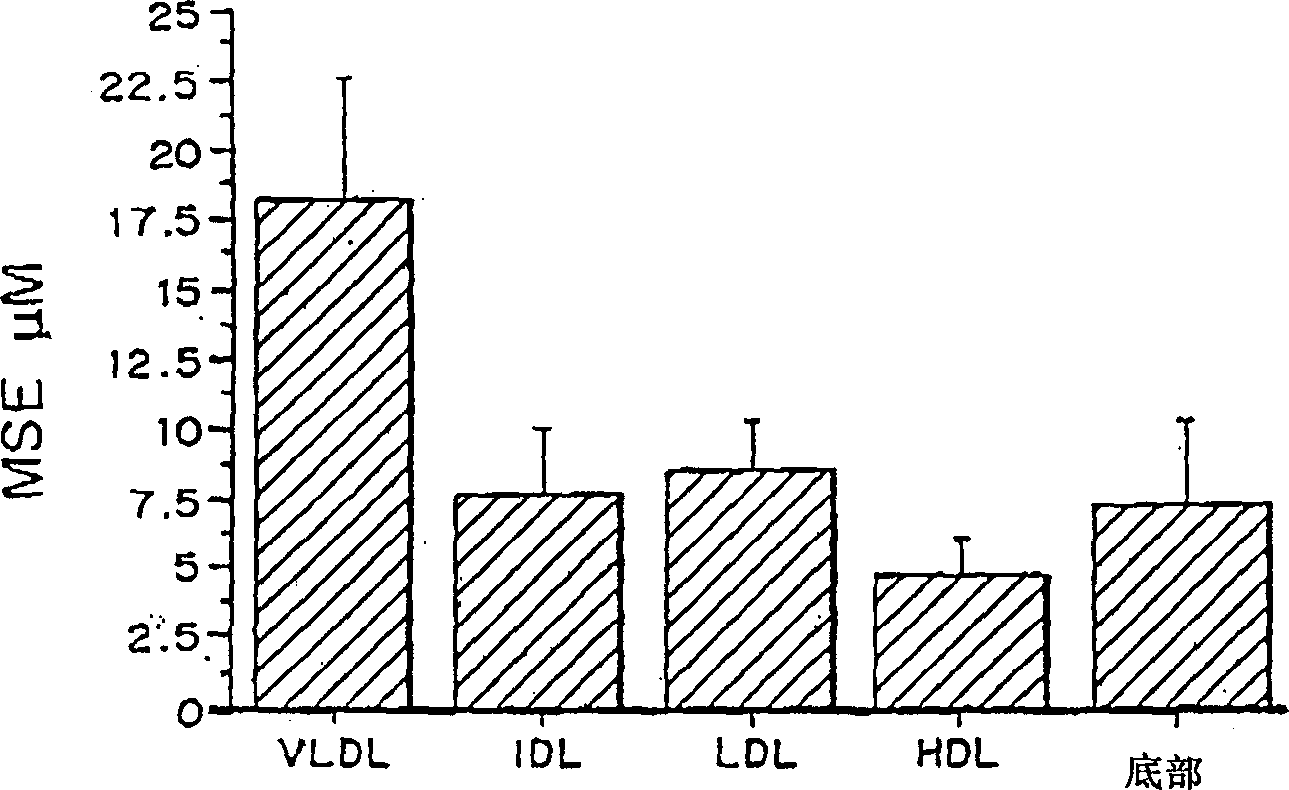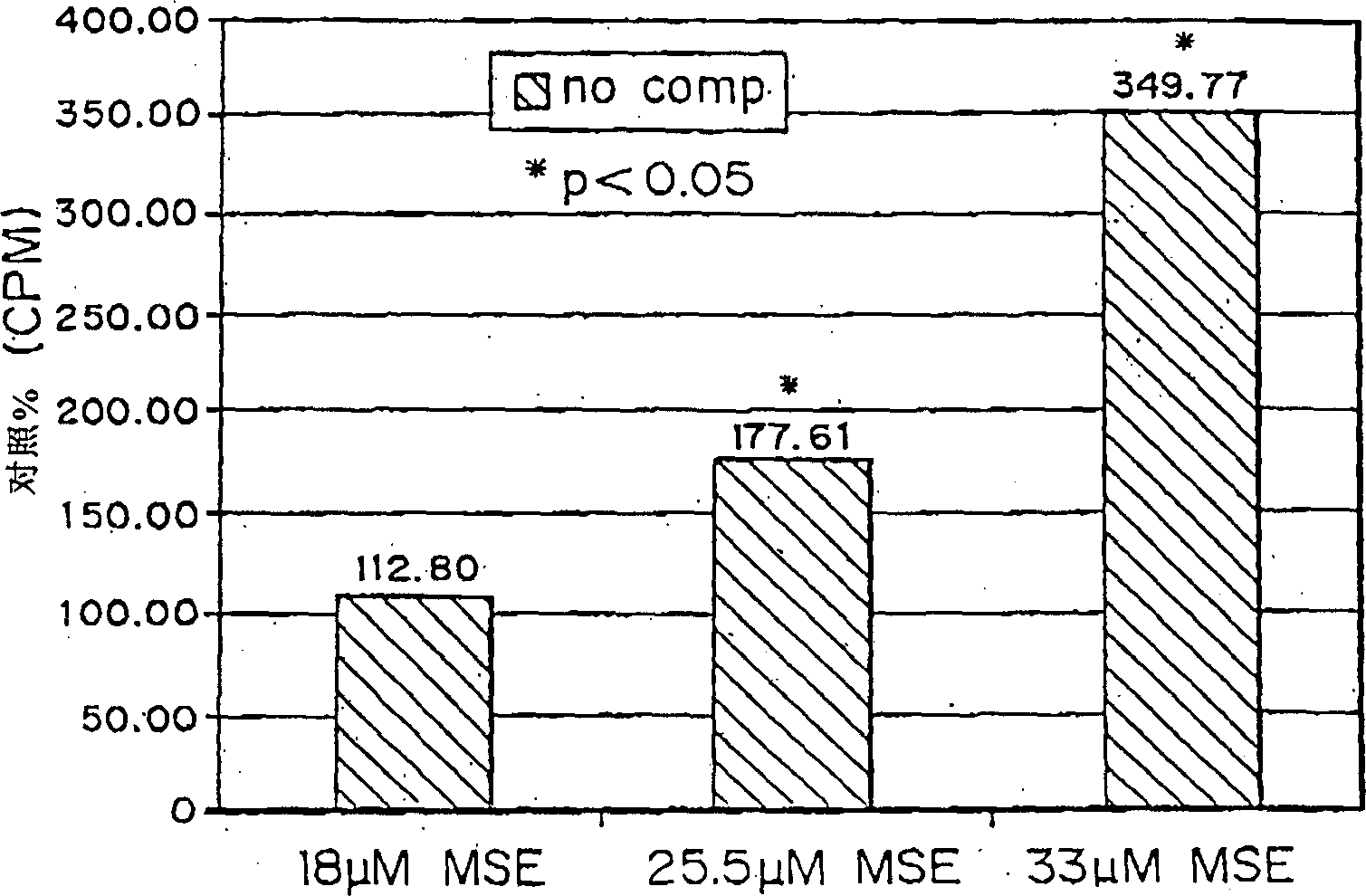Methods and compositions to lower plasma cholesterol levels
A technology of cholesterol and plasma, applied in drug combination, biological test, pharmaceutical formulation, etc., can solve problems such as HDL reduction
- Summary
- Abstract
- Description
- Claims
- Application Information
AI Technical Summary
Problems solved by technology
Method used
Image
Examples
Embodiment approach
[0055] (i) A method of assessing whether a compound is an LDL clearance enhancing agent comprising admixing the drug with cholesterol-containing lipoproteins in vivo or in vitro; isolating the complex, and determining whether binding of the compound to the complex results in enhanced lipoprotein Changes in the three-dimensional structure of apoB-100 in lipoproteins of binding affinity to the LDL receptor;
[0056] (ii) A method of lowering plasma cholesterol in a host, the method comprising, administering to the host a compound capable of forming a complex with cholesterol-containing lipoproteins such as LDL or VLDL, and then determining whether the newly formed complex causes the lipoprotein to react to the LDL receptor Structural alteration of apoB-100 with increased binding affinity;
[0057] (iii) A method of altering the structure of a cholesterol-containing lipoprotein comprising mixing the cholesterol-containing lipoprotein with a compound in vivo or in vitro and determ...
Embodiment 1
[0083] The present invention includes (i) assays for determining whether binding of potential LDL-scavenging drugs to LDL or VLDL can cause structural changes in apoB-100 that affect LDL-receptor binding; and (ii) assays for potential LDL-scavenging enhancing drugs A method for determining whether complexes of LDL or VLDL alter the electrophoretic mobility pattern, and, if so, whether the interaction alters the structure of apoB-100 on LDL or VLDL. Example 1 Monosuccinate of probucol binds to VLDL and LDL in vivo and in vitro
[0084] To test whether probucol monosuccinate can be separated from plasma circulating lipoproteins, rabbits were fed a high fat diet for 6 weeks and the compound was orally administered at a dose of 150 mg / Kg / day. Animals were bled at 6 weeks and plasma lipoproteins were separated by ultracentrifugation at high speed.
[0085] All plasma was separated by fast liquid chromatography (FPLC) with a Superose 6HR 10 / 30 column. with 0.01% EDTA and 0.02% NaN...
Embodiment 2
[0089] To confirm the in vitro binding of probucol monosuccinate to purified human LDL, agarose electrophoresis was performed. Agarose electrophoresis is a technique used to separate and study lipoproteins. Probucol monosuccinate was added to purified human LDL and the mixture was subjected to agarose electrophoresis. Addition of probucol derivatives to LDL altered the mobility of LDL, suggesting that the monosuccinate ester of probucol interacts with LDL, most likely through physical association of the compound with lipoproteins. In contrast, probucol did not alter the mobility of LDL. Example 3 Monosuccinate of probucol binds to LDL and changes the epitope expression of LDL-apoB-100
[0090] To determine whether the binding of monosuccinate to VLDL and LDL can cause changes in the structure of apoB-100, an immunoreactivity assay was designed. This is a sandwich ELISA assay that measures the expression of specific antigenic epitopes on apoB-100. The sandwich ELISA essenti...
PUM
 Login to View More
Login to View More Abstract
Description
Claims
Application Information
 Login to View More
Login to View More - R&D
- Intellectual Property
- Life Sciences
- Materials
- Tech Scout
- Unparalleled Data Quality
- Higher Quality Content
- 60% Fewer Hallucinations
Browse by: Latest US Patents, China's latest patents, Technical Efficacy Thesaurus, Application Domain, Technology Topic, Popular Technical Reports.
© 2025 PatSnap. All rights reserved.Legal|Privacy policy|Modern Slavery Act Transparency Statement|Sitemap|About US| Contact US: help@patsnap.com



